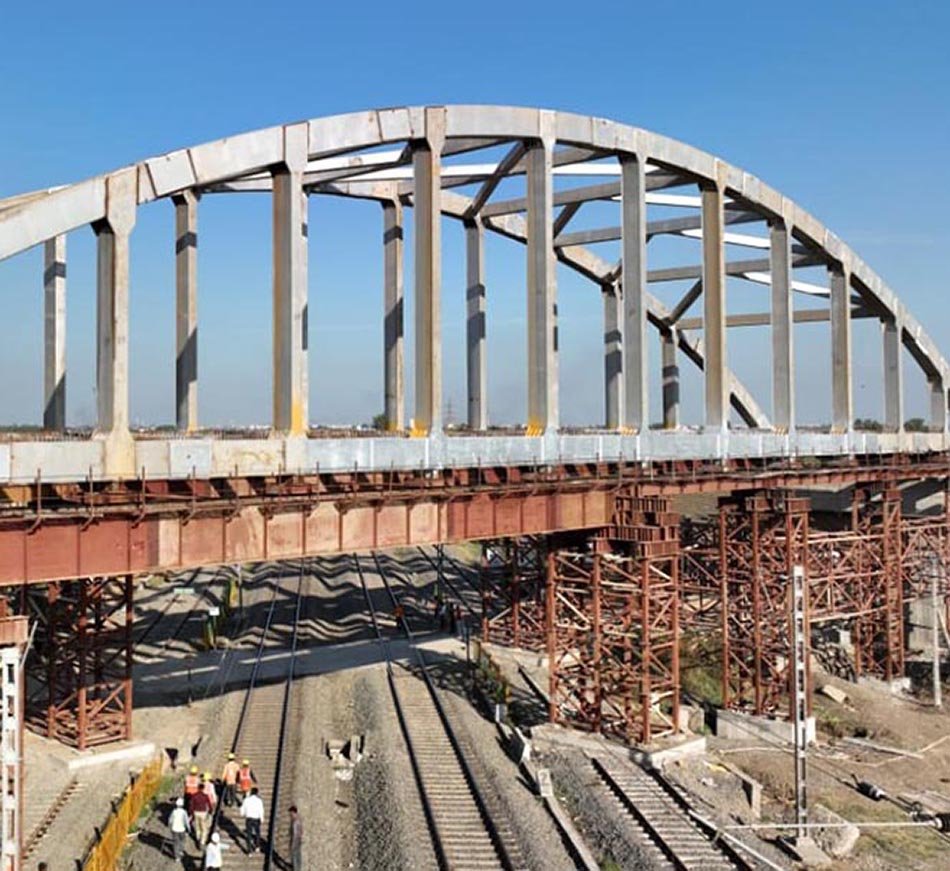
Bridge Construction
Steel bridge construction involves the use of steel as the primary structural material for building bridges. Steel offers several advantages for bridge construction, including its strength, durability, and versatility. Here is an overview of the key steps involved in steel bridge construction:
- Planning and Design:
Preliminary planning involves site assessment, traffic analysis, and environmental considerations.
Detailed engineering design includes structural analysis, load calculations, and the selection of appropriate steel components.
- Foundation Construction:
Foundations are crucial for supporting the bridge structure. Common foundation types include spread footings, pile foundations, and caissons. Foundations must be designed to withstand the loads and environmental conditions specific to the bridge location.
- Fabrication of Steel Components:
Steel components, such as beams, girders, and trusses, are fabricated off-site in specialized manufacturing facilities. Quality control measures are implemented to ensure that the fabricated components meet design specifications.
- Transportation to Site:
Once fabricated, steel components are transported to the bridge construction site. Large components may be transported in sections and assembled on-site.
- Erection of Steel Structure:
Steel components are lifted into place using cranes or other lifting equipment. Precise alignment and connection of the components are crucial to ensure the structural integrity of the bridge.
- Welding and Bolting:
Steel components are joined together using welding or bolting methods. Welding provides a strong, continuous connection, while bolting allows for easier disassembly and maintenance.
- Deck Installation:
The bridge deck is installed on top of the steel structure. The deck provides a roadway or walkway for users. Different types of deck materials, such as concrete or steel, may be used depending on the design requirements.
- Surface Treatment:
To protect the steel from corrosion, various surface treatments are applied, such as painting, galvanizing, or applying protective coatings.
- Finishing Touches:
Guardrails, lighting, and other safety features are installed. Final inspections and quality checks are conducted to ensure that the bridge meets safety and design standards.
- Maintenance:
Regular maintenance is essential to ensure the longevity and safety of the steel bridge. This includes inspections, repairs, and, if necessary, surface recoating.
Steel bridges are known for their durability and resistance to various environmental conditions. They are often preferred for their high load-bearing capacity and relatively quick construction time compared to other materials.
